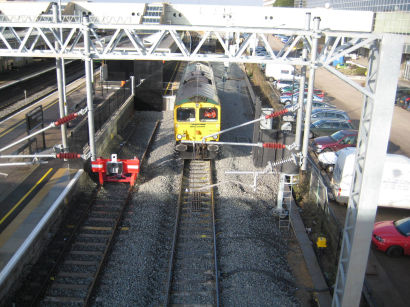RE-OPENING rail lines and stations closed over 40 years during the “Beeching cuts” figure prominently in new proposals from Britain’s train operating companies to expand capacity for the growing number of passengers.
Michael Roberts, chief executive of the Association of Train Operating Companies (ATOC), told BBC News: “We have established that there is a strong business case for investment to bring a number of towns back on to the rail network.
"Now we need to safeguard these routes and develop the detailed case for investment."
A report by ATOC proposes 14 lines re-connecting 40 stations to the national rail network, improving access to trains for up to a million people. It also calls for seven park-and-ride stations to be built on existing lines and identifies 20 more lines whose reopening could be justified on employment grounds.
The report says the case for reopening local stations and building ‘parkways’ has been strengthened by lack of parking at main stations and congestion on roads leading to them.
The areas that would be served by the 14 lines identified in the report are:
• Cranleigh in Surrey
• Bordon, Hythe and Ringwood in Hampshire
• Brixham in Devon
• Aldridge and Brownhills in the West Midlands
• Wisbech in Cambridgeshire
• Leicester to Burton in the East Midlands
• Fleetwood, Rawtenstall and Skelmersdale — all in Lancashire
• Washington in Tyne and Wear
• Ashington and Blyth in Northumberland
"They are all large towns which have changed radically since the railways went 40 years ago. Many were old coal mining or manufacturing centres, which now generate large numbers of commuters who need to use the train" said the report’s author Chris Austin, who retired earlier this year from the post of ATOC’s Director of Public Policy.
"In total the 14 schemes would cost about £500 million. At the very least the land needs to left as a possible rail corridor, rather than being built on,” he said. "All the schemes, with support from national and local government, could be completed over the next two decades."
ATOC is also examining the case for additional lines to improve connections within the existing network. These include one between Oxford and Milton Keynes which, by linking into existing routes, would improve access to two of the eco-towns proposed by the Government.
• When the British Railways Board was created in the 1960s its first chairman was Dr Richard Beeching, a director of ICI. His report on the re-shaping of the railway industry led to the network being cut by a third, with 2,000 stations and 5,000 miles of track closed down. Over 200 stations were re-opened in the 1980s and early 1990s, before privatisation, but few have come on stream since then
Despite the overall reduction in track and station capacity in the past 45 years, the rail system today carries around 30 per cent more passengers than it did then. The Government expects that passenger numbers will increase by another 22 per cent by 2014, with yet more growth in the following five years.
Beeching era closures proposed for re-opening
15th June 2009


